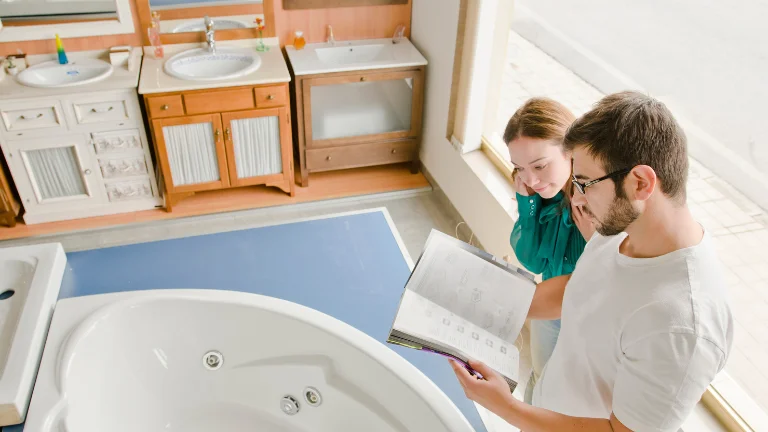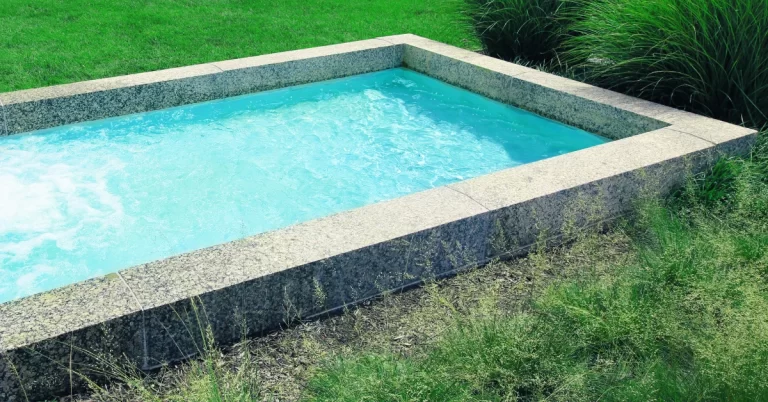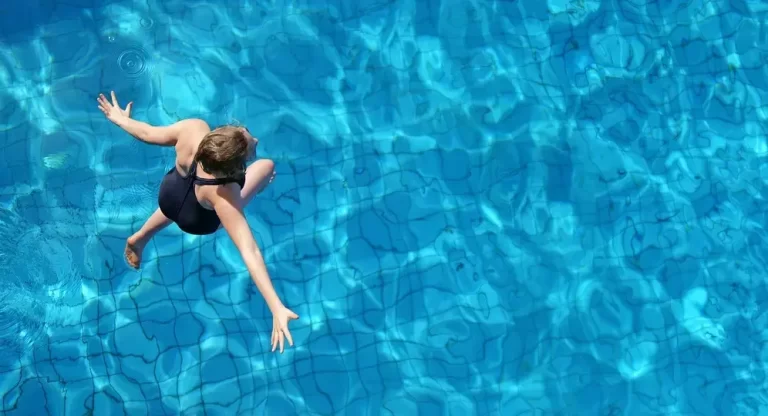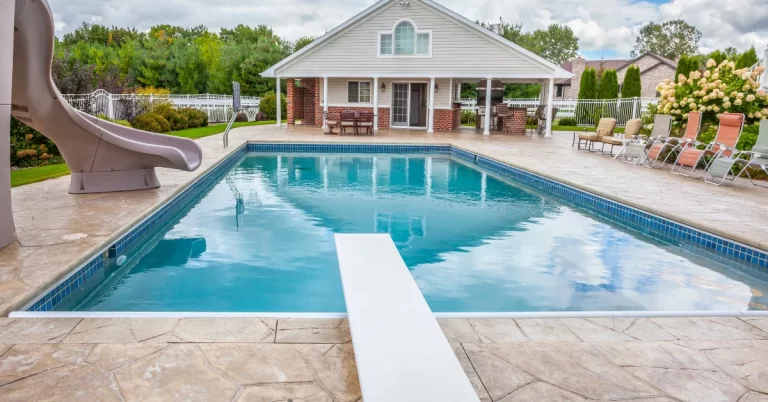Cold Plunging Guide: Benefits, Safety, and Best Practices
Cold plunging, also known as cold water immersion or ice bathing, involves submerging the body in cold water (typically 50°F to 59°F) for a short period. It’s practiced for physical recovery, mental focus, and general wellness.
While popular in athletic and wellness communities, cold plunging should be approached with an understanding of how it affects the body.
Studies show just two to three sessions per week can reduce muscle soreness and even help regulate mood, but there’s a right (and wrong) way to do it. If you want to know about the science or need practical tips, this guide breaks down what works.
Not sure what it costs to set up at home? Our average cost of a small plungage pool article is to find what.
What Is Cold Plunging?
Cold plunging involves immersing your body in cold water for 1 to 10 minutes. It can be done in a variety of settings:
- Natural bodies of water (lakes, rivers, ocean)
- Cold plunge tubs or tanks
- Converted bathtubs with ice
- Commercial spas or wellness centers
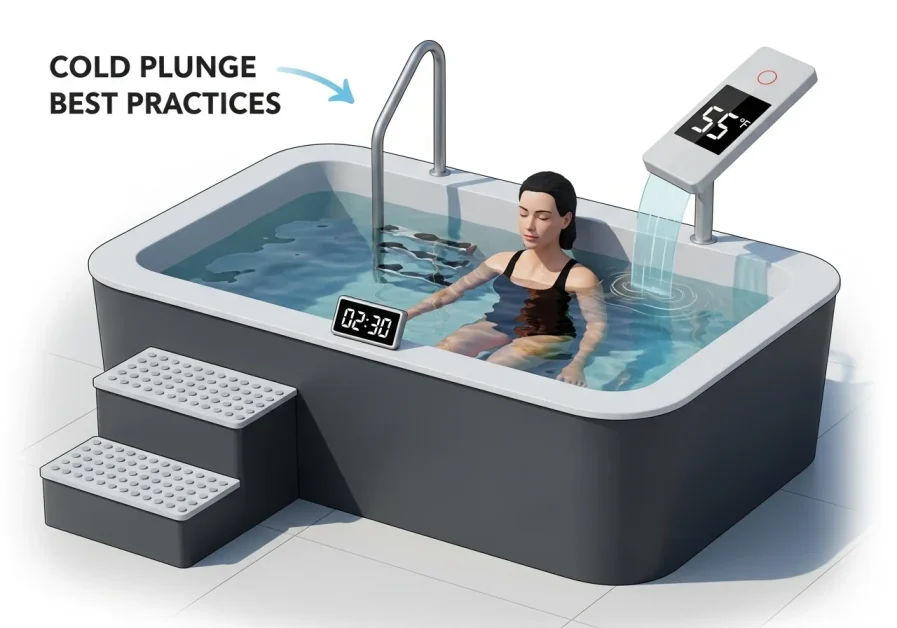
Water temperature typically ranges from 50°F to 59°F (10°C to 15°C), though some go colder.
Disclaimer:
This content is for informational purposes only and not a substitute for professional medical advice. Always consult your doctor before starting cold plunging, especially if you have any health conditions or concerns.
Why Do People Cold Plunge?
Many people use cold plunging to help with:
- Muscle recovery after intense workouts
- Reducing inflammation
- Boosting mental alertness
- Improving mood regulation
- Increasing resilience to stress
While research is ongoing, several small studies and anecdotal reports support these uses.
Potential Benefits (Backed by Research)
| Potential Benefit | What Research Suggests |
|---|---|
| Reduced muscle soreness | May help reduce DOMS (delayed onset muscle soreness) |
| Lower inflammation | Cold exposure may decrease pro-inflammatory markers |
| Mental clarity | Activates sympathetic nervous system, increasing alertness |
| Stress adaptation | Repeated exposure may improve stress response over time |
| Improved circulation | Blood vessels constrict and then dilate, promoting circulation |
NOTE
Individual results vary. Not all benefits are consistently supported by large-scale studies.
And if you’re torn between hot and cold therapy, check out how a plunge pool hot tub combo might be a better fit for your routine.
Is Cold Plunging Safe?
For most healthy individuals, yes, but there are important precautions:
Who Should Be Cautious or Avoid It:
- People with heart conditions or high blood pressure
- Individuals with circulatory issues
- Those with a history of fainting or cold-induced asthma
- Pregnant individuals (consult a healthcare provider first)
Possible Risks:
- Cold shock response (rapid breathing, increased heart rate)
- Hypothermia (if submerged too long)
- Dizziness or fainting after exiting
- Nerve numbness in fingers or toes
Start slow, monitor how your body responds, and avoid plunging alone.
How Long Should You Stay In?
Beginners should aim for 1 to 3 minutes, gradually working up to 5 to 10 minutes. Even 30 to 60 seconds can be effective.
| Experience Level | Recommended Duration | Water Temperature |
|---|---|---|
| Beginner | 1–3 minutes | 55–59°F (13–15°C) |
| Intermediate | 3–5 minutes | 50–55°F (10–13°C) |
| Advanced | Up to 10 minutes | 45–50°F (7–10°C) |
Always exit the water if you begin to feel numb, dizzy, or extremely cold.
Best Practices for Cold Plunging
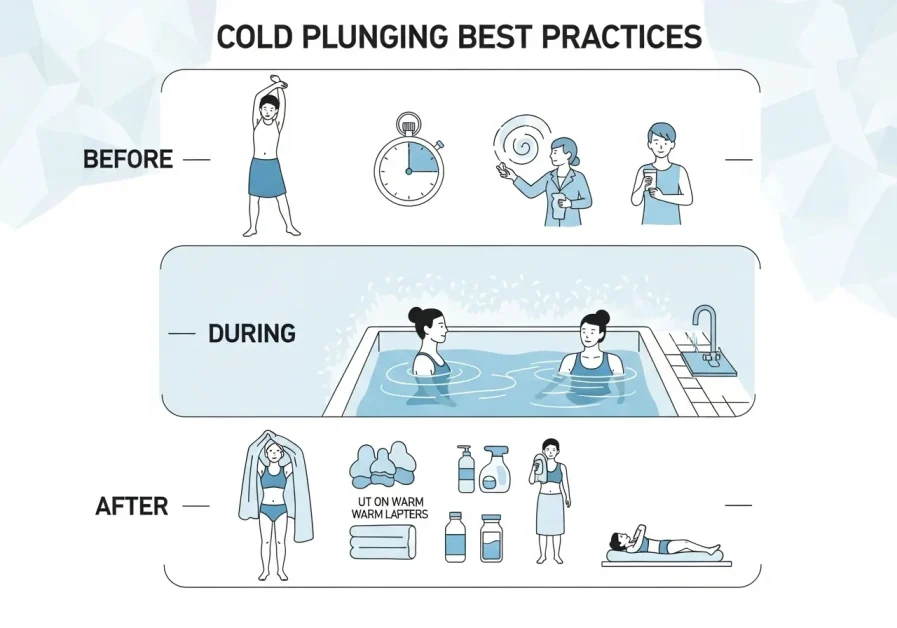
Before You Start:
- Consult a doctor if you have any medical conditions.
- Warm up with light movement, but avoid sweating.
- Set a timer to avoid overexposure.
During the Plunge:
- Control your breathing. Focus on slow exhales.
- Don’t go past your comfort zone in early sessions.
- Keep your hands and feet in if tolerable, but optional.
After the Plunge:
- Warm up gradually using layers or movement, not hot showers.
- Stay hydrated.
- Track how your body feels hours later.
Cold Plunge vs. Ice Bath: What’s the Difference?
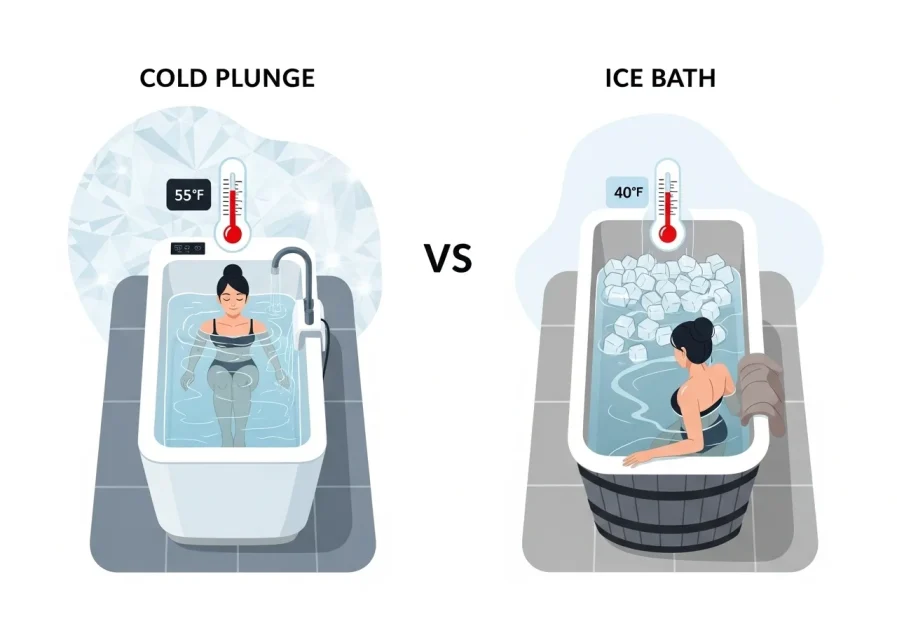
| Feature | Cold Plunge | Ice Bath |
|---|---|---|
| Water source | Chilled circulating water | Still water with added ice |
| Temperature | More consistent (50–59°F) | Can fluctuate (32–50°F) |
| Setup | Requires equipment | DIY friendly |
| Maintenance | Often filtered and reused | Drained after each use |
The terms are often used interchangeably, but a cold plunge typically refers to a cleaner, temperature-controlled experience.
How Often Should You Cold Plunge?
Depends on your goals and tolerance:
- For muscle recovery: 2–3 times per week
- For mental benefits: Daily or every other day
- For general wellness: 1–3 times weekly
There’s no universal “right” frequency. Start with once a week and adjust based on how you feel.
Can Cold Plunging Help With Sleep, Anxiety, or Mood?

Some people report better sleep and reduced anxiety after regular plunges. Theories include:
- Increased norepinephrine, a stress-fighting hormone
- Lowered cortisol levels
- Improved parasympathetic nervous system activation post-plunge
An individual’s reactions vary. Cold plunging shouldn’t replace medical treatment for anxiety or insomnia.
Common Myths and Misconceptions
| Myth | Reality |
|---|---|
| “The colder, the better” | Extremely cold water can be dangerous |
| “You need 10 minutes for benefits” | Even 1–2 minutes can be effective |
| “It burns fat fast” | Brown fat activation is real, but not a magic fix |
| “Anyone can do it” | Not safe for all medical conditions |
Tips for Setting Up a Cold Plunge at Home
Low-cost methods:
- Bathtub filled with cold tap water and ice
- Outdoor trash can or large container (cleaned thoroughly)
Higher-end setups:
- Purpose-built cold plunge tubs
- Portable chillers with filtration and circulation
Ensure safety with:
- Thermometer to track water temp
- Safe access in and out
- Supervision if you’re new
Is Cold Plunging Right for You?
Cold plunging can offer real benefits, especially for recovery and stress management. That said, it’s not a cure-all. Approach it mindfully, understand your limits, and use it as part of a broader wellness routine. When in doubt, check with a medical professional before diving in.
Where Can I Try Cold Plunging Near Me?
If you’re new and not ready to commit to a home setup, many gyms, recovery studios, and wellness centers now offer cold plunge sessions. You can search for:
- Cryotherapy or hydrotherapy studios in your area
- Spas with cold plunge tubs or contrast therapy
- High-performance gyms and recovery lounges
NOTE
Tip: Look for places with temperature-controlled tubs, not just DIY ice baths.
What Are the Benefits of a 2-Minute Cold Plunge?
You don’t need to stay in long to see benefits. Just 2 minutes of cold water immersion may:
- Reduce inflammation
- Kickstart alertness through norepinephrine release
- Help muscles recover faster
- Provide a small but effective mood boost
Even brief exposure can stimulate your nervous system without overwhelming your body. It’s a smart place to start.
Is It Safe to Cold Plunge Every Day?
Many people do a daily cold plunge, especially for mental benefits like increased energy, improved focus, or mood support. For physical recovery, 2 to 3 sessions per week might be enough.
Everyday plunging is typically safe for healthy individuals if you:
- Stick to safe time and temperature limits
- Warm up slowly afterward
- Monitor how your body responds over time
What’s the Ideal Cold Plunge Temperature?
The sweet spot for most people is between 50°F and 59°F (10°C to 15°C). Colder temps (as low as 39°F) are possible, but increase risk and discomfort.
| Experience Level | Water Temperature | Notes |
|---|---|---|
| Beginner | 55–59°F | Easier entry, less shock |
| Intermediate | 50–54°F | Stronger cold response |
| Advanced | 45–49°F or lower | Use caution, shorter time |
Always listen to your body. Cold shock is real, and colder isn’t always better.
Can Cold Plunging Trigger a Heart Attack?
In some cases, yes, but it’s rare. Cold plunging causes a rapid increase in heart rate and blood pressure due to the cold shock response. This can be risky for people with:
- Heart conditions
- High blood pressure
- Poor circulation
NOTE
If you have any concerns, talk to your doctor first, especially before plunging below 50°F or longer than a few minutes.
Are There Cold Plunge Benefits for Women?
Some research suggests that cold exposure may help with hormonal resilience and immune response. But comfort with cold varies person to person. Starting with short, consistent plunges is key.
Many women report improvements in:
- Energy and mental focus
- Stress relief and mood regulation
- Reduced soreness post-workout
- Improved circulation
How Long Should You Cold Plunge?
Use a timer, and don’t push through shivering or numbness. The benefits come from consistent exposure, not extremes. It depends on your experience level and goal:
- Beginner: 1 to 2 minutes
- Intermediate: 3 to 5 minutes
- Advanced: Up to 10 minutes
Always start with less and work up gradually. Even 30 seconds can be a good starting point.
What Type of Tub Do You Need?
- Basic: Bathtub with ice
- Mid-range: Converted chest freezer or outdoor container
- Premium: Purpose-built cold plunge tub with filtration and chillers

